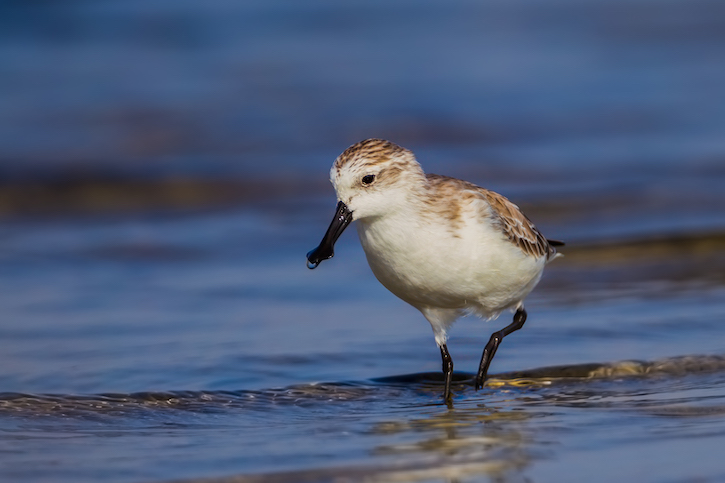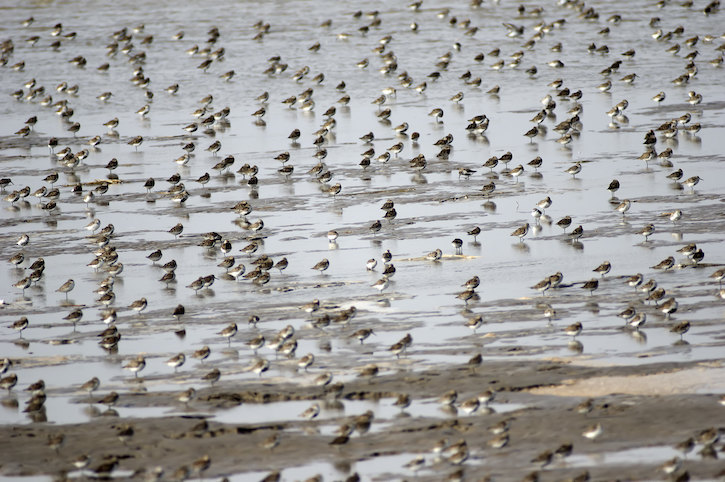
In a move encouraged by the Paulson Institute, delegates chose to inscribe the “Migratory Bird Sanctuaries along the Coast of the Yellow Sea-Bohai Gulf of China (Phase I)” as part of the World Heritage List on July 5th at the 43rd session of the World Heritage Committee, held in Baku, Azerbaijan. This designation marked China’s first coastal wetland World Heritage Site and its 54th World Heritage Site in total. The Institute has collaborated with conservation organizations all over the world to strongly support this nomination.
The designated sanctuaries are located in coastal Yancheng, Jiangsu Province, and include the largest intertidal mudflats in the world. Located at the heart of East Asian-Australasian Flyway—the most threatened migratory flyway in the world—these sites support a large number of endangered and critically endangered species and provide important stopover, moulting, and wintering sites for millions of migratory waterbirds each year.
Rose Niu, Chief Conservation Officer of the Paulson Institute, lauded the inscription of the coastal wetlands in Yancheng. “This a significant milestone in coastal wetland conservation in China,” she said. “The inscription builds on the work of the Paulson Institute to highlight the importance of China’s coastal wetlands, and the resulting change in policy by the Chinese government to ban further land reclamation. The Paulson Institute will continue to support the conservation and sustainable management of coastal wetlands in China, including through our support for the Phase II nomination of Migratory Bird Sanctuaries along the Coast of the Yellow Sea-Bohai Gulf of China, and our ongoing support for coastal wetland and biodiversity conservation.”
Seventeen migratory bird species listed on the IUCN Red List have been recorded at the newly designated sites, including one critically endangered species (Spoon-billed Sandpiper) and five endangered species (Black-faced Spoonbill, Oriental Stork, Red-crowned Crane, Nordmann’s Greenshank, and Great Knot). Importantly, these mudflats host more than 90% of the remaining global population of Spoon-billed Sandpiper during their post-breeding moult, and 80% of the global population of Red-crowned crane during the winter. Some long-distance migratory species, such as Black-faced Spoonbill, Nordmann’s Greenshank, Eurasian Curlew, and Great Knot, use the area as a staging site to refuel during migration. The IUCN’s evaluation report indicates that the area provides indispensable natural habitats for many rare and endangered migratory birds, and has outstanding global conservation value.

The World Heritage Site inscription is the latest step towards protecting these globally important sites. Just five years ago, there were fears for the future of the intertidal mudflats along the Yellow Sea and the migratory waterbirds that depend on them. Around 60% of China’s intertidal mudflats had been lost in the previous few decades and much of the remaining area was under threat. To address these issues, the Paulson Institute partnered in February 2014 with the Convention on Wetlands Management Office, the People’s Republic of China, the Institute of Geographic Sciences and Natural Resources Research, the Chinese Academy of Sciences, and the Lao Niu Foundation to produce a comprehensive analysis of the value of coastal wetlands and devise a set of policy recommendations for coastal wetland conservation.
The resulting outcome, known as the “Blueprint of Coastal Wetland Conservation and Management in China,” was published in October 2015. Following its release, the benefits provided by coastal wetlands have been recognized by the Chinese government at the highest levels. In early 2017, the Chinese government added 16 key coastal wetlands to a tentative list of sites to be considered for World Heritage status, many of which were recommended by the Blueprint project for priority protection. This was followed by a July 2018 circular from the State Council halting further ‘business-related’ land reclamation along China’s coast. Currently, the Paulson Institute is providing training for managers of protected wetland areas and is working to ensure important wetlands in China are managed and conserved effectively.
There is still much work to be done to ensure the long-term protection and sustainable management of China’s coastal wetlands. However, after the decision in Baku, the future of these globally important sites and the migratory shorebirds that depend on them is a little brighter.




